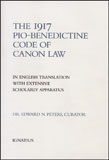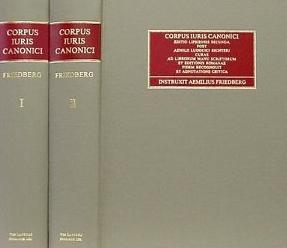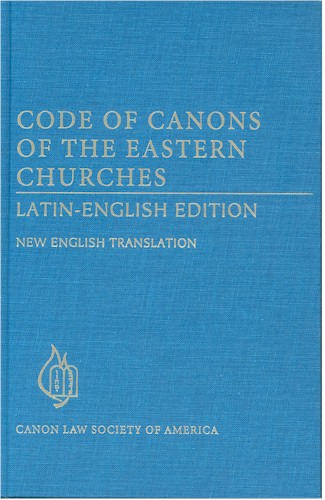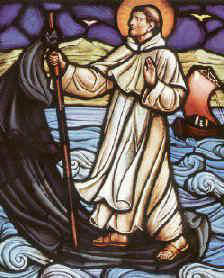|
To work for the proper implementation of canon law is to play an extraordinarily constructive role in continuing the redemptive mission of Christ. Pope John Paul II |
|
|
|
|
Resolution 1152 x 864 |
Updated 15 jan 2013 |
Review of David Torevell, Losing the Sacred: (T&T Clark, 2000) 236 pp. |
|
Edward Peters, Review of D. Torevell, Losing the Sacred Ritual, Modernity and Liturgical Reform, in Antiphon 9 (2005) 215-218. |
David Torevell, senior lecturer in theology and religious education at Liverpool Hope University College in England, has emerged as an important commentator on matters liturgical and, to judge from his monograph, Losing the Sacred, he will have much to offer the field in coming decades. Perhaps Torevell’s main strength as a critic of post-conciliar liturgical trends is his ability, sorely lacking among most liturgists, to apply insights of sociological and cultural sciences in the assessment of liturgy. In the present work, Torevell looks carefully at what he describes as the diminution of bodily or physical elements in liturgy and the concomitant attempt to supplant such tangible elements with intellectual exercises. In brief, he warns that an over-cerebralization of the liturgy is allowing an unhealthy dichotomy between mind and body to infiltrate liturgy, making it more difficult for the larger part of Catholics—i.e., those precisely whom the Liturgical Movement intend to serve most directly—to enter appropriately into the worship of the Church. It is an argument worthy of careful examination.
In this review, however, I have chosen not to attempt to reconstruct Torevell’s arguments, but rather, to face squarely some difficulties that readers are likely to encounter in studying his work. Such an exercise is justified, I think, because Torevell is an impressive thinker whose works are likely to gain in influence rather than fade and, as he is a young scholar, he has time to accommodate his material more closely to the needs of his readers (assuming my suggestions are on point in the first place, of course.)
First, then, one must admit that Torevell’s prose is excessively dense. There are frequently too many thoughts packed into too few sentences, thus requiring the reader to slow to a crawl, back up, and unpack the clauses, sometimes word by word, before plowing into the next sentence which, likely as not, will offer no respite from the waves of information. For example, Torevell writes “Although ritual behavior may involve highly prescriptive ways of doing things, the meaning or ‘message’ of a performance is not classified unproblematically ... Not concerned about securing specific objectives or goals, it is differentiated from mere craft, skill or technique by its refusal to make sense of an action in terms of precise classificatory diagnosis, or what Lewis calls ‘means-end relationship’” (28-29, cit. omm.) I am sure there must a clearer way of expressing this, but I do not know what that might be, since I am not sure what it means in the first place. Nor do I think this worry is merely a personal opinion on my part. Having informally “asked around”, I noted more than a few Torevell readers cautioning the uninitiated to stick with him for the sake of the content, and not to be embarrassed by their difficulties encountered in reading him.
The second note of concern I sound is related to the first and springs, ironically, from one of Torevell’s major strengths, his credentials as cultural critic. So wide is his reading here and so sure is his grasp of cultural and demographic aspects of ritual and liturgy that Torevell, for me anyway, did not give enough background for or contextualization of the many scholars he made use of. I for one needed to know more about the work of the men and women Torevell presents in order to form some judgment of my own (as opposed to relying, in most cases, solely on Torevell’s word) as to the relevance and reliability of his sources. At the same time, and this is hard to express with examples, I was often confused as to where Torevell’s description of this scholar’s or that’s broke off and his own endorsement (or rejection) of the points at issue began. I know I can trust Torevell, but too often, I could not tell whether Torevell was informing me of current ideas or warning me about them. Again, if the density of Torevell’s prose were a bit ameliorated (here, with brief asides from him identifying precisely whose opinions are at issue in such and such a passage) I would have had an easier time of following the flow of concepts.
These are stylistic points, of course, and persons with differing abilities will react to them differently. A more significant concern I have is one encountered frequently in liturgy discussions today, especially among those who recognize that something, somewhere, has gone seriously wrong with the post-conciliar liturgical experience, namely, the sense of uncertainty as to when one’s discontent is directed at the reform, and when one’s ire is directed at the reformers (here, read “post-conciliar implementers of the pre-conciliar reforms endorsed by Vatican II”). I think I know where Torevell comes down on this point, but some of his manners of expression and use of examples is going to leave him open, I think, to criticism that he does not deserve.
It is not fair, if I may put it that way, for Torevell to describe Barauna, Jungmann, and Seasoltz as enthusiastic about the liturgical changes of Vatican II without clearly reminding readers (in 2005) that the first two scholars, writing in the mid-1960s, had in mind the changes indicated by the Council itself, while the third, writing in the early 1980s, would have had fifteen years of post-conciliar liturgical upheaval in mind as his primary referent.
Or, consider Torevell’s observation (at p. 147) that: “The Constitution emphasised the need to turn to a more psychological model of worship by its clear emphasis on the double purpose of liturgy: it was to be concerned both with the worship of God and with the sanctification of the person, achieved through signs perceptible to the senses (SC paragraph 7).” As noted above, it is not clear to me whether this line is merely descriptive, in which case it is accurate enough, or whether it is intended to be critical (the tone of the sentence, in context, is negative.) In either case, this underscoring of the “double-purpose” aspect of liturgy is not, for good or for ill, a conciliar innovation, but rather, an elaboration of the teaching found in Pope Pius XII in Mediator Dei, no. 17. I think this tendency to read, for example, Sacrosanctum Concilium without acknowledgment of its heavy reliance on Mediator, and the more than occasional lack of clarity with which Torevell distinguishes his opinion from that of the authors he is discussing, makes his treatment of even such well-known documents as Sacrosanctum unnecessarily hard to follow.
Or consider finally Torevell’s assertion, “Experimentation with new forms of liturgy continues within Roman Catholicism. Relevance and appeal to individual worshippers is still common. For example, the practice of repeating the Christian name of the communicant (if known), before saying ‘the body of Christ’ is still widespread, one attempt among many of trying to make the liturgy more personal and individually meaningful.” (p. 204). Many readers will have to clarify for themselves what Torevell asserts: I, for one, have not seen this aberration for over a decade, when I did see it, it was not “widespread”, and in any case it represented not “a new form of liturgy within Roman Catholicism,” but rather, a liturgical abuse. If there was a sentence in Torevell that clearly stated something like: “In critiquing the liturgical crisis that followed in the wake of the Second Vatican Council, one must constantly distinguish the changes authorized, prudently or not, by the Council Fathers and their legitimate successors, from those introduced illegally by individual celebrants and local communities, and avoid condemning the former for the many sins of the latter,” I missed it.
But in this I risk ending this review on an unduly negative note. Torevell’s work is an important contribution to a neglected if strongly theoretical aspect of liturgy, namely, the role of physical presence and actions in public worship. The criticisms I offered here are only intended to help readers navigate the unfamiliar waters Torevell sails ably and to suggest ways that this solid scholar can produce charts more useful to the rest of us.
|




